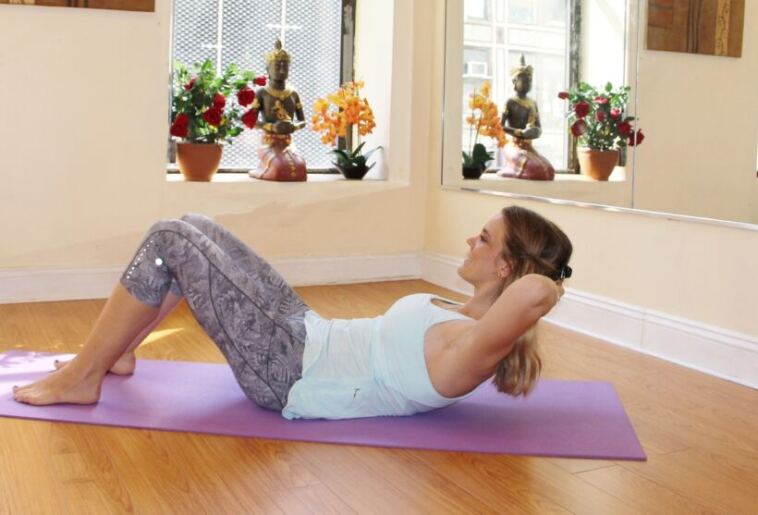- Like
- SHARE
- Digg
- Del
- Tumblr
- VKontakte
- Flattr
- Buffer
- Love This
- Save
- Odnoklassniki
- Meneame
- Blogger
- Amazon
- Yahoo Mail
- Gmail
- AOL
- Newsvine
- HackerNews
- Evernote
- MySpace
- Mail.ru
- Viadeo
- Line
- Comments
- Yummly
- SMS
- Viber
- Telegram
- JOIN
- Skype
- Facebook Messenger
- Kakao
- LiveJournal
- Yammer
- Edgar
- Fintel
- Mix
- Instapaper
- Copy Link
Introduction
Being a mother is beautiful, but it’s a wake-up call to a different reality in many aspects of your life. Motherhood changes your usual schedule, including your exercise routine.
Whether it’s your first, second, or more trips around the postpartum block, your body feels different from the pre-pregnancy one. The hormones associated with pregnancy and childbirth cause significant changes, including weight gain and energy levels. However, embracing postpartum fitness enables your body to recover and bounce back faster.
While many women resume exercise immediately after birth in an effort to shed off pregnancy weight, it’s advisable to give your body a break and avoid pushing your body too far.
Remember, the guideline for your postpartum exercises depends on the type of birth (cesarean or vaginal), complications experienced, and your current state.
Ready to reap significant lifestyle benefits and slowly regain your overall health after childbirth? Well, let’s have a look into Post-Pregnancy fitness.
Benefits of Post-Pregnancy Fitness
1. Improve your overall mood
Exercising can improve your overall mood.
During exercise, the body produces endorphins, which interact with your brain receptors, thus giving you a positive and happy feeling similar to that of taking morphine.
Additionally, the endorphins also reduce the perception of pain, thus acting as sedatives.
2. Good for your mental health
Childbirth, to many women, is an exciting and joyous time, but for some, transitioning into motherhood can lead to postpartum depression, psychosis, and other mental health difficulties.
However, exercising can improve your mental well-being, relieve stress and prevent postnatal depression.
Additionally, exercising gets you out there; whether you are walking around your neighborhood, local park, or gym, you get out of your home, get some fresh air, and meet other people.
Other Top Benefits Include:
- It enhances stamina levels, helping you to take care of your kids
- You replenish your tired body with the vitality and vigor needed to enable you to raise your baby
- Toning and making your body more flexible
- Reducing the postpartum blues with a positive and energetic healthy mind
- Helping you to lose weight and also become fitter and healthier.
Remember, you don’t have to over-exercise; 10 minutes a day is better than nothing!
How Your Body Changes During Pregnancy and After Birth
During pregnancy and birth, your body undergoes various hormonal, physical, and emotional changes.
The pregnancy and birth process weakens your pelvic muscles, affecting bladder control.
Your pelvic floor includes the ligaments that support your uterus, bladder, and bowel, and it may get weak due to the following:
- Baby size
- Pushing for extended periods during labor
Regular exercise like Kegel will aid in strengthening your pelvic floor but being too vigorous too soon after birth can cause further damage.
Avoid heavy weight or high-impact exercises since they may increase the chances of prolapse. Prolapse is when your organs, like the uterus or womb, drop to an abnormal position.
Pregnancy hormones also affect your ligaments and joints, making them more fragile. This weakness may continue for up to six months, and vigorous exercise poses a greater risk of injuries.
The abdominal muscles may also separate during pregnancy and usually return to normal after birth. However, in some cases, they may not return to normal. Gentle muscle-strengthening exercises are advisable.
When to Start Exercising After Pregnancy
Every childbirth experience is unique and different; thus, you should start exercising when you feel mentally and physically ready.
For some people, it may take only a few weeks, and for others, months, but it’s advisable to consider healthy and safe fitness guidelines experts recommend.
During your 6-week postnatal checkup, talk to your doctor about starting fitness programs or going to the gym.
However, if you have had a healthy pregnancy and delivered vaginally, you can start gentle exercise a few days after childbirth.
However, those with birth complications like severe vaginal tears, diastasis, or had a cesarean section, need to heal before exercising.
Remember to always seek your doctor’s advice before starting.
However, it’s advisable to avoid returning to your previous fitness level until after six months. For both cesarean and vaginal birth, avoid swimming until:
- You have completely healed
- The bleeding has stopped.
Understanding Breastfeeding and Post-Pregnancy Fitness
Moderate exercising won’t affect your breast milk flow quantity or quality, if you are fully hydrated.
However, extensive exercise can affect your milk production, as you are redirecting a lot of your energy to exercise that would otherwise go into milk production.
Physical Activity Goals
After pregnancy, healthy women should at least embark on 150 minutes of moderate-intense workout aerobic activity spread throughout the week.
Please follow the below guidelines:
- Start with warm-up and end with cool down
- Begin slowly and gradually increase the pace
- Drink plenty of healthy fluids
- Wear a good sports bra and nursing pads to support your increased breast mass and heaviness due to milk production
- Immediately stop exercising if you start feeling pain
Exercising After Vaginal Birth
Start with gentle abdominal and pelvic floor exercises, and later take a gentle walk while pushing the pram. Then, increase the speed within your pace, for up to 30 min per day.
Exercising After Cesarean Birth
A cesarean is a major operation that can take six or more weeks to heal, depending on the individual, but sometimes, delays may occur due to doctors’ incompetence.
If you suspect malpractice, seek expertise of a reputable personal injury lawyer on how to file a lawsuit.
However, after a cesarean, you can slowly engage in pelvic floor exercises. Avoid crunches, sit-ups, or abdominal curls since they pressure your wound.
Also, avoid lifting heavy things apart from your baby, and if you have to lift something, avoid bending your back, keep it straight, and tighten your tummy.
For up to three months, your wound will still be healing, but walking around and engaging in low-impact cycling and aerobics is okay. Stop immediately in case of discomfort, pulling sensation on the wound, and pain, and wait a little longer before exercising again.
Type of Low-risk Post-Pregnancy Exercises
Some low-risk exercises include…
Abdominal exercises and bracing
These include:
- Sitting on the floor
- Standing for a while
- Lying on your back and side
Kneeling on all fours
When in the above position, pull your tummy towards your spine, and hold for about 5 seconds while breathing normally. Take a break and repeat the process a few other times. Practice such move when
- Picking the baby up
- Sitting down or standing
- Getting in or out of bed
Pelvic floor exercises
Pelvic tilt
Doing tilts helps strengthen your abdominal muscles. Lie on your back comfortably and position your knees bent, feet on the floor.
Flatten your back by tightening your abdominal muscles and slightly bending your pelvis. Hold the tilt position for about 10 seconds and repeat frequently; five times daily and ten repetitions.
Kegel exercises
Kegel exercises help in toning the pelvic floor muscles that support your rectum, small intestine, bladder, and uterus. Regular practice of Kegel exercises may help in reducing anal and urinary incontinence.
To do Kegels, contract the pelvic floor muscles like you are trying to stop urinating midstream, hold the position for 10 seconds, relax between the contractions, and then release the position. Do at least three sets of 8-10 repetitions daily.
Baby yoga pose
After birth, your pelvis muscles can tighten and become painful. Practice the baby yoga pose to release the pain and relax the pelvis muscles.
Lie comfortably on your back, and then bring your knees closer to your chest.
Open your knees more comprehensively than the hips while keeping your arms inside your knees.
Use your hands inside the knees to hold onto your ankles or feet, and then bend the knees to ensure your feet’ bottom faces upwards and slowly pull them down to enable you to lower your knees towards the surface.
Focus on keeping your pelvic muscle floor relaxed and hold for about 90 seconds. Repeat the process frequently.
Other Exercises to Utilize
Other safer post-pregnancy fitness exercises include:
- Aqua aerobics and swimming (after the bleeding has stopped)
- Walking
- Light-weight training
- Cycling
- Low-impact aerobics
Learn to incorporate the above exercise while shopping, meeting friends, or doing household tasks.
For example: when breastfeeding, practice pelvic floor exercises. Instead of driving your baby around, opt to walk them in their pram.
Overcoming Post-Pregnancy Fitness Barriers
When caring for newborns, finding time to keep fit can be very challenging. Hormonal changes, sleepless nights, and the all round work of taking care of newborns can take a toll on your energy levels. However, don’t give up.
Seek partner, friends, and family support, and always schedule a time to engage in physical fitness. Include your baby by taking walks together or having them lie on the floor next to you while doing abdominal exercises.
Final Thoughts on Post-Pregnancy Fitness
Keeping fit for new mothers can be a complicated and emotionally filled activity. However, to achieve mental and physical well-being, don’t give up or push your body too far.
There are many benefits to be had from making the time to exercise including managing your mood, better mental health, and increased levels of energy.
See also:


